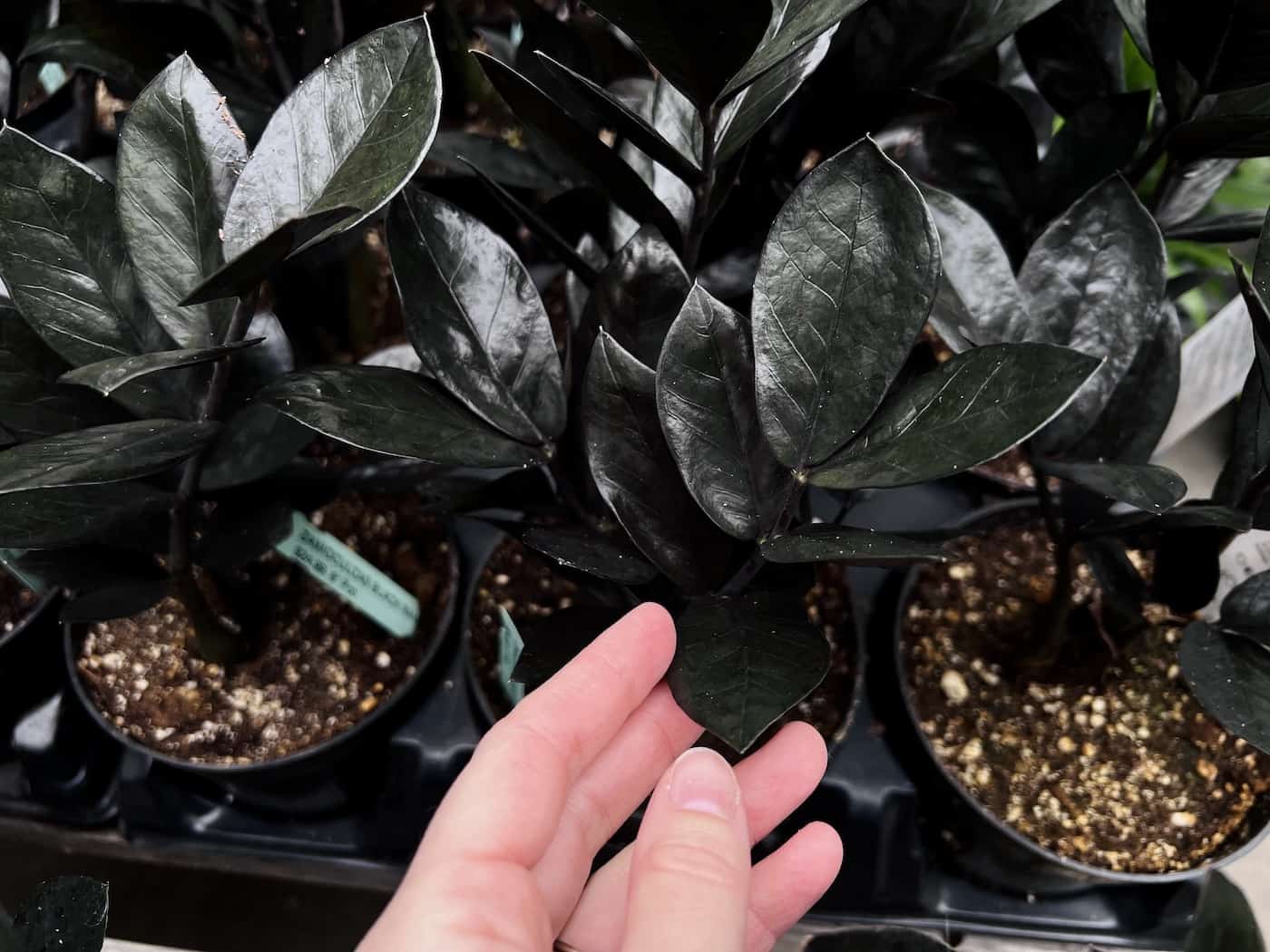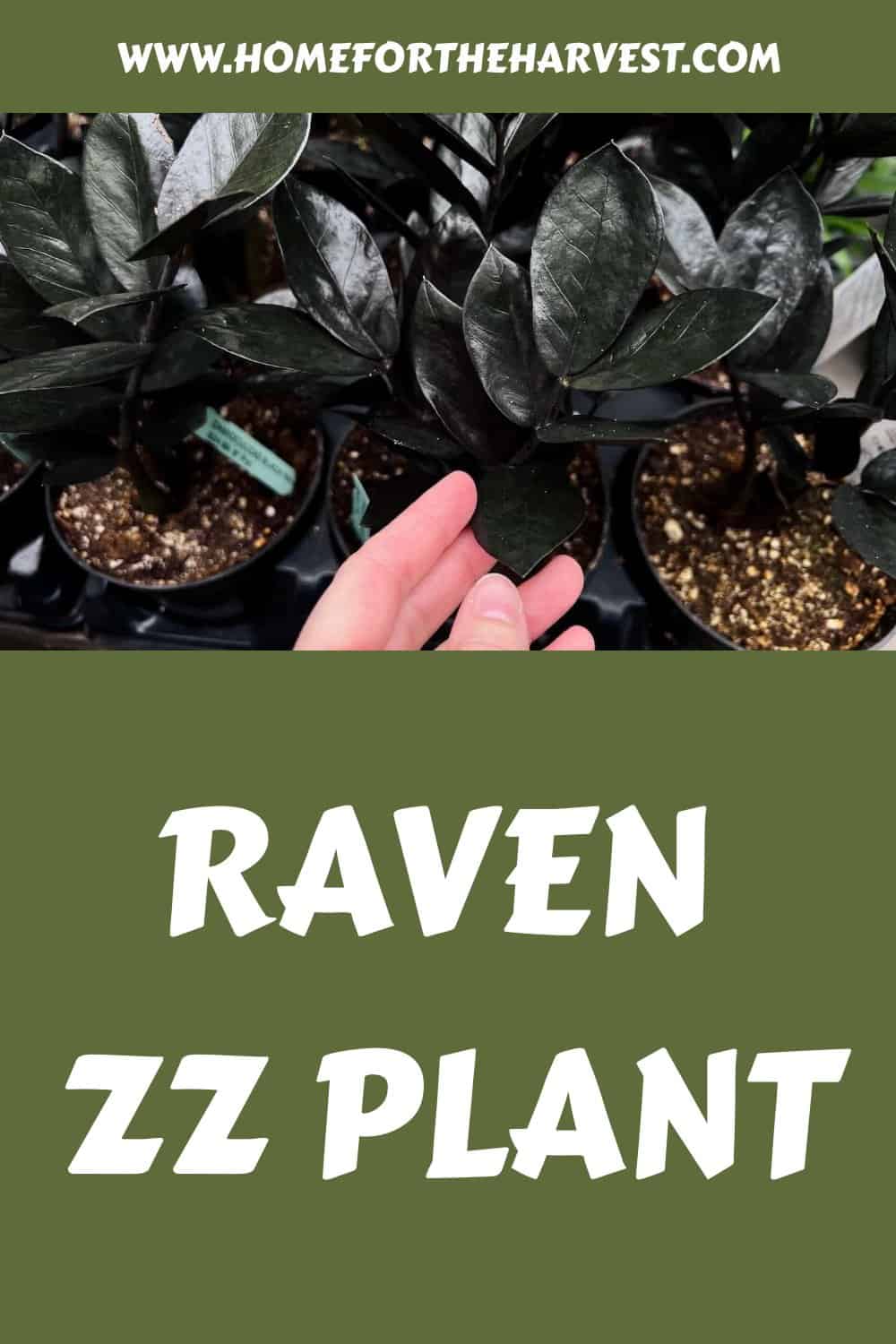Topping the list of beginner-friendly houseplants is Zamioculcas zamiifolia, commonly known as the ZZ Plant. If you already own a few of these and are looking for something a little different, try the dark and dramatic ‘Raven’ cultivar instead.
Raven ZZ Plants are just as easy to grow as the original species. They are tolerant of many lighting conditions, don’t mind dry air indoors, and don’t need to be watered very often. They also aren’t heavy feeders, requiring little to no fertilizing depending on the performance of the plant. Repot every few years and wipe down the leaves occasionally to keep the black leaves looking their best.
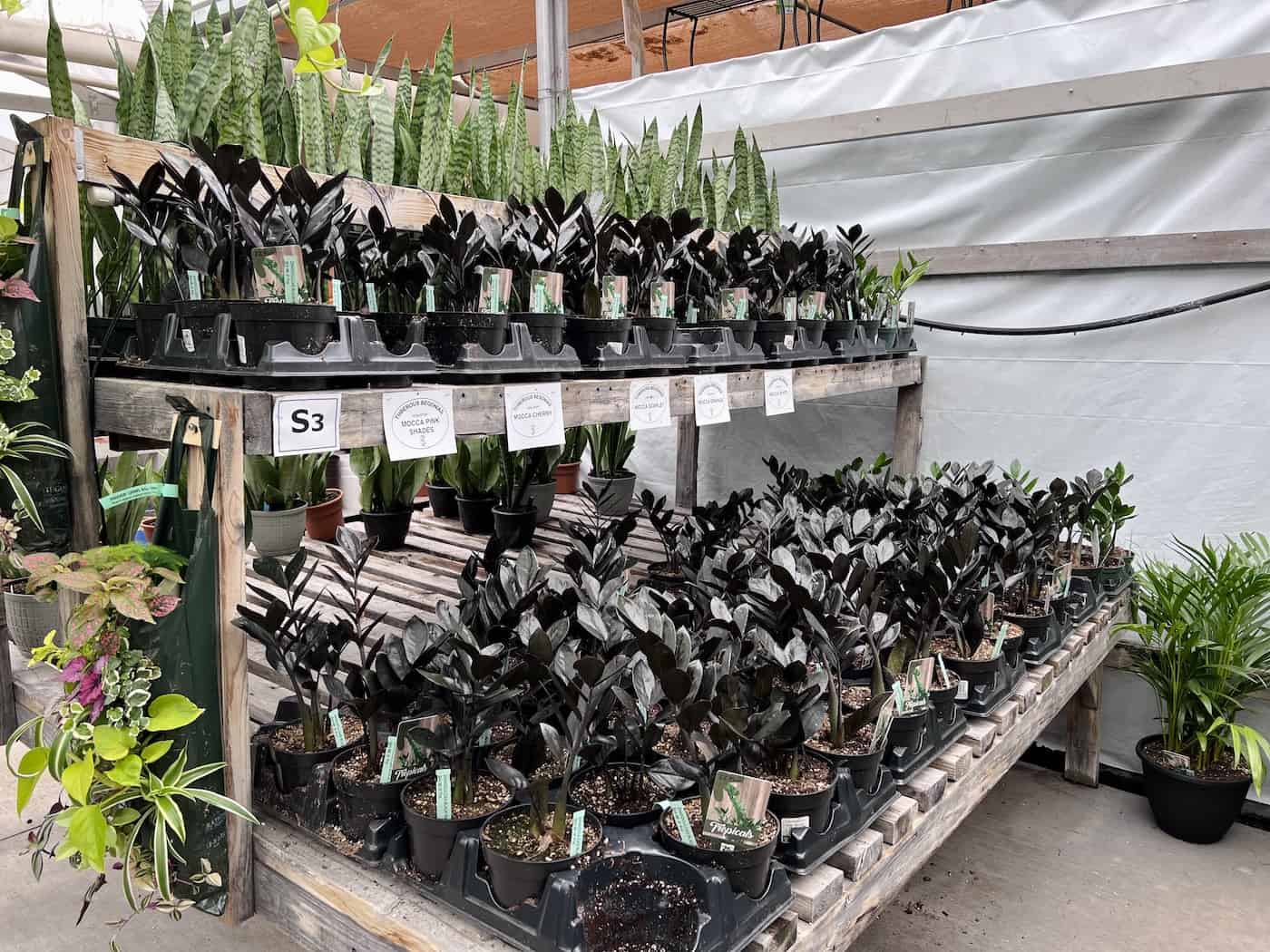
Raven ZZ plant basics
Raven is a cultivar of the ever-popular houseplant, ZZ Plant. Scientifically known as Zamioculcas zamiifolia, these plants are native to the coastal areas of East Africa. This is also the reason you may find them labeled Zanzibar Gems.
ZZ Plants were originally part of the Caladium genus, a group of colorful and leafy plants. But it was later moved to the Zamioculcas genus, remaining in the same plant family Araceae. This means it is closely related to most tropical houseplants, like peace lilies and anthuriums. The genus name was given by Austrian botanist Heinrich Wilhelm Schott due to the plant’s similarity in appearance to cycads of the Zamia genus.
Zamioculcas zamiifolia has a slightly different growth pattern from other houseplants. They grow from rhizomes that reside under the soil, storing water and nutrients for later use. Pointed leaves appear on long stalks that give the plant a fan-like appearance.
While these leaves are normally green in standard ZZ Plants, Raven is slightly different. This cultivar sports deep green, almost black leaves that make it look much more dramatic than regular species. New leaves start out bright green and slowly turn a spooky black, providing continual interest throughout the year.
ZZ Plants are one of the most low-maintenance houseplants you can buy, making them incredibly popular for beginners. Luckily, the Raven ZZ Plant is no different.
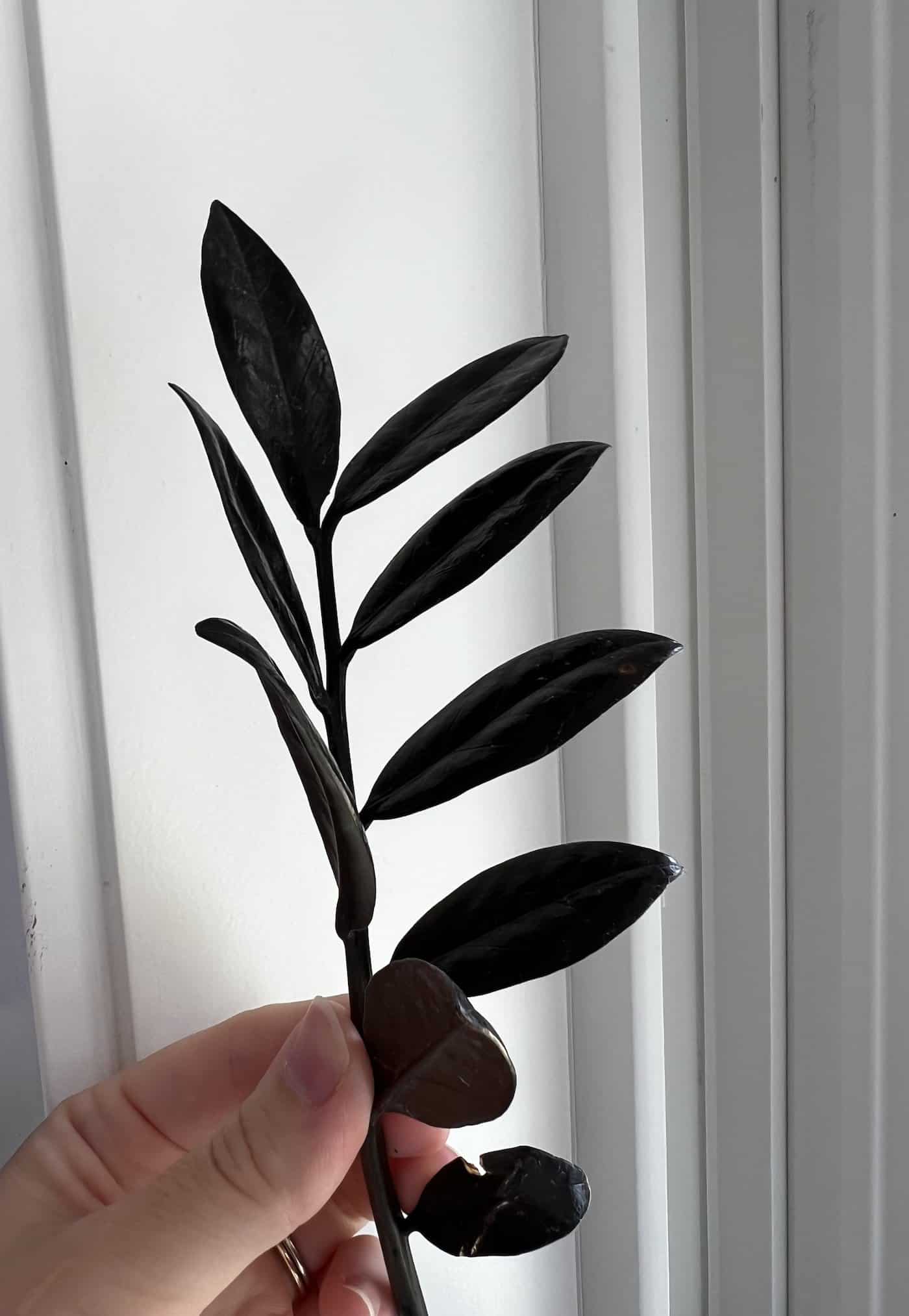
Sunlight requirement for raven ZZ plant
Raven ZZ Plants are not at all fussy about their lighting conditions. They can tolerate almost any level of light as long as they are introduced to it gradually. Whether you have a low-light corner or a bright and sunny spot, they will rarely show signs of struggle.
The best position for your Raven ZZ Plant is in bright indirect light. This will provide the strongest growth without burning the leaves. It will also help maintain the black color of the leaves – something every Raven grower is after. Look for spots in front of east-facing windows or even south-facing windows protected by a sheer curtain.
If you don’t have the perfect spot for your Raven, that doesn’t mean you shouldn’t consider growing them. In fact, if you only have low-light areas in your home, this is the first plant you should look for. ZZ Plants are incredibly tolerant of low light conditions, more tolerant than most houseplants. They will grow slowly in these areas and may stretch slightly toward the nearest light source, but they will not struggle too much.
As with most tropical houseplants, it’s best to avoid areas with harsh direct sun. This can quickly burn the leaves, especially if they have not been exposed to any direct sun before. Gentle morning sun is fine and may even benefit growth, but keep them away from midday and afternoon direct light.
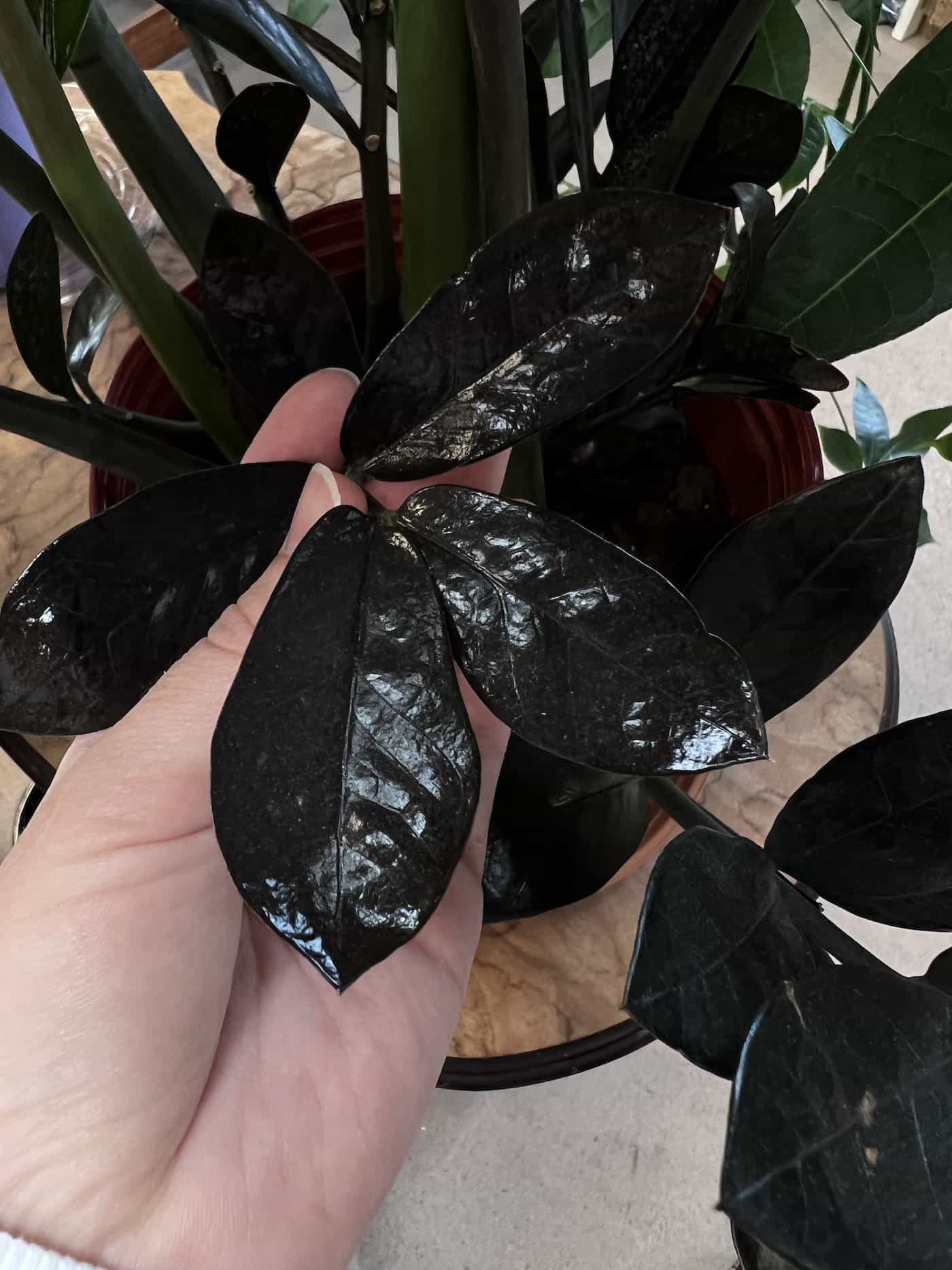
Watering raven ZZ plants in pots
Thanks to their native areas and water-storing rhizomes, Raven ZZ Plants are considered quite drought-tolerant. They are not heavy water users and are accustomed to going several weeks without water in their habitats. Although containers do dry out much quicker, they still aren’t demanding water-wise.
Your ZZ Plant will likely only need water once every couple of weeks and even less in winter. However, it’s better to avoid using strict schedules as these don’t account for changes in environmental conditions thanks to things like temperature, light and humidity.
Instead, test the moisture of the soil with your finger. The soil can be left to dry out almost completely before you consider watering again. You can also lift the pot to gauge its weight and by extension, how much moisture is left in the soil.
The rhizomes of Raven ZZ Plants are incredibly sensitive to overwatering. If you water when the soil is still moist, the rhizomes will begin to rot. Unfortunately, it’s difficult to save the plants when this happens, so it’s a vital mistake to avoid.
Humidity preferences of raven ZZ plant
Added to the long list of things Raven ZZ Plants aren’t fussy about is humidity.
Tropical houseplants typically require humidity levels that closely match their native habitats, which can go as high as 90% and more during the rainy season. ZZ Plants, on the other hand, handle dry air quite well and generally grow fine in any humidity levels thanks to their native habitats.
Aim for around 40%, but don’t stress if your humidity isn’t that high. Avoid misting to raise humidity as this can encourage rotting and disease on the leaves and stems.
Temperature requirements for raven ZZ plant
Most indoor temperatures meet the needs of Raven ZZ Plants well. That’s why they are prime candidates for indoor growth. While they prefer temperatures on the warmer side, they will be happy when indoor temperatures are around 60F or above throughout the year.
These houseplants are not hardy and don’t appreciate cold weather. When temperatures drop below 50F, the plant will likely stop growing. Below 40F, the stems and leaves may face internal damage. Keep your pots away from windows in extremely cold weather and avoid cold drafts from open windows or air conditioners.
Repotting raven ZZ plant
Raven ZZ Plants are considered slow growers. Even when their conditions are perfect, they take quite a while to fill out their pots. Once purchased, you can generally keep your plant in the same pot for several months or even years before repotting, depending on the size at purchasing.
These plants are happy to remain crowded in their pots, only needing repotting at the very last minute. Wait until you see roots emerging from the drainage holes, or when the rhizomes begin stretching malleable pots, before you begin the process.
To repot, follow these easy steps that apply to most houseplants:
- Prepare a light soil mix suitable for houseplants. Look for a well-draining houseplant-specific mix online or at your local nursery. If you cannot find one, add equal parts perlite and coconut coir or peat moss to high-quality potting soil to create the right conditions for these plants.
- Choose a pot around one or two sizes up at most. Avoid excessively large pots as these can hold onto more moisture than the plant can absorb, leading to rotting.
- Squeeze the sizes of the original pot or run a knife along the edges to release the plant. Pull it out gently at the base. Never pull from the long stems as the soft growth may snap.
- Loosen the roots to expose the rhizomes. If the plant is overgrown, this is the perfect time to divide. Trim any damaged growth to encourage new healthy roots to develop.
- Place the plant in the new pot, filling in the gaps with more soil mix. Press around the base gently to anchor the plant in place. After repotting, you can return to your usual care routine.
Fertilizing raven ZZ plant
Raven ZZ Plants will generally grow well without additional fertilizers. They are not heavy feeders and usually don’t struggle without feeding as long as the soil is high-quality. However, if you feel the growth of your plant is slowing, or if you haven’t replaced the soil in a while, you can apply a balanced houseplant fertilizer during spring and summer as per packaging instructions.
ZZ Plants are more prone to problems with over-fertilizing than under-fertilizing. Never add more fertilizer than recommended on the packaging and flush the soil thoroughly if you notice any wilting or yellowing soon after feeding.
Pruning raven ZZ plant
These plants are super low-maintenance, and this includes removing pruning from your task list. Raven ZZ Plants won’t require any pruning at all unless you want to trim off diseased or damaged growth as it appears. You can generally keep your pruning shears in the cupboard for this one.
Propagating raven ZZ plant
Raven ZZ Plants are patent protected. That means propagating these plants is prohibited by law, especially with the intention to resell. Non-patented ZZ plants are easy to propagate.
Stem cuttings
Remove a healthy ZZ Plant stem as close to the soil line as possible to keep the parent plant looking tidy. Remove the leaves from the bottom half of the cutting and root in a mixture of coconut coir and perlite. Move the pot to an area with bright indirect light and keep the soil moist until the cutting has rooted. Transplant to a larger pot with the right potting mix to continue growth.
Leaf cuttings
Remove an individual leaf off the plant, taking a small part of the stem with it. Plant the leaves in the same propagating mix mentioned above, keeping only the base buried. Mist the soil often to keep it moist, waiting for signs of new growth to appear at the base.
Division
To split your ZZ Plant into two, start by removing the plant from its current pot. Examine the roots and identify areas where the plant can be split. Cut into the rhizome to separate each section using a sharp and disinfected knife. Repot each division into new soil to continue growing as before.
Pests & diseases affecting raven ZZ plant
ZZ Plants generally won’t face many pest and disease problems. However, they remain susceptible to a couple of common indoor pests, especially if they are already present on one of your other houseplants:
- Scale
- Mealybugs
- Spider mites
- Aphids
Remove these pests with natural insecticidal soap and continue applying until all pests have been removed.


